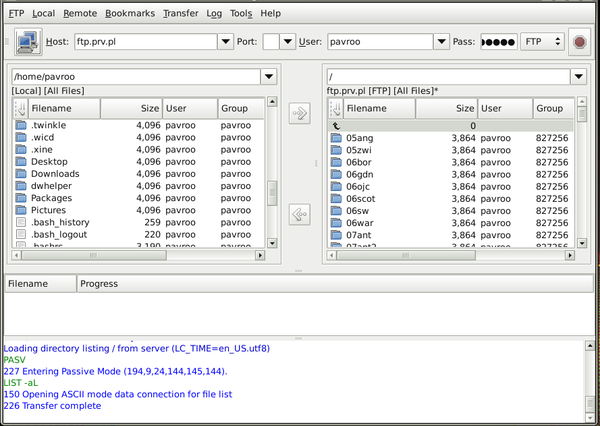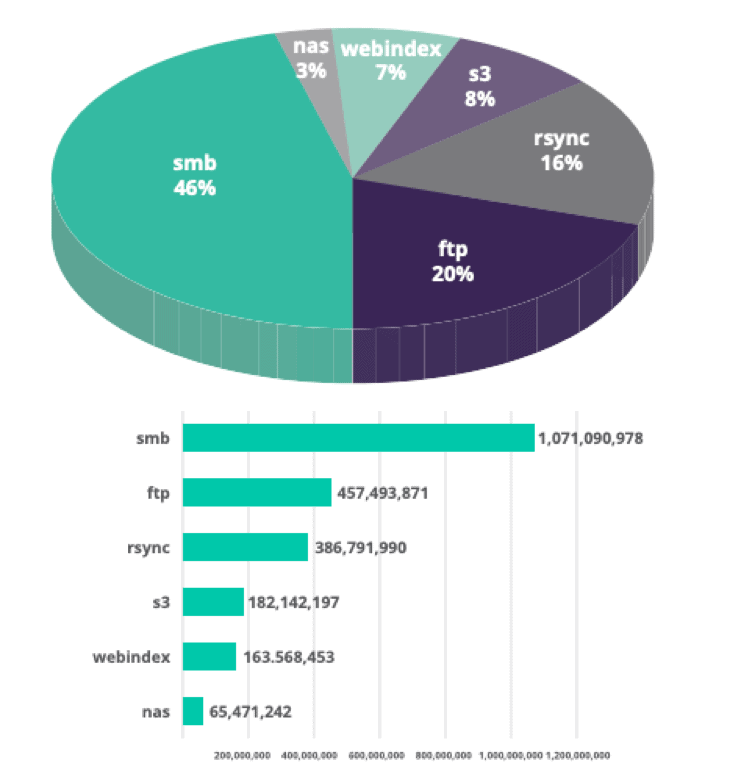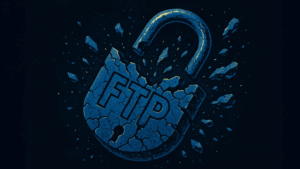
Looking for an FTP alternative?
Are you in need of a secure FTP alternative? You are not alone. FTP, or file transfer protocol, designed in 1971 before the digital evolution of the internet, has become a primary target for hackers and malware distributors due to its lack of modern encryption support. As browsers like Chrome, Safari and Firefox continue to block FTP or label it as insecure, it’s become imperative for organizations to explore more secure file transfer protocols.

FTP was designed before the Internet as we know it, before every computer running in a business was connected to a global communication and information exchange network. It started as a basic protocol for Internet file transfers when few people had access to the Internet and even fewer had the skills to be dangerous. Over time, FTP became entrenched in many company’s technology infrastructures, when security threats were mostly theoretical.
Today, it’s hard to imagine a world without the web, but it was only in 1993 that CERN donated its World Wide Web technology to the public domain. That’s when the era of human hyper-connectivity began. In many ways, it has created opportunities for education, business, altruism and social progress. So much has happened in the past 30+ years that it is easy to understand why worrying about a basic Internet protocol hasn’t been top of mind for enterprise leaders.
However, years of regular high-profile hackings have threatened individual privacy, business intellectual property and beyond. Today, as concerns over internet privacy and security grow, FTP has become increasingly outdated — users and organizations need to seek more secure file transfer methods.
In their 2020 National/Industry/Cloud Exposure Report, Rapid7 found 13 million active FTP sites (13,002,452), slightly down from their 2019 findings. As of 2024, the Napalm FTP indexer is a search engine specifically designed for locating and downloading files from public FTP and has indexed more than 745 million files, totaling over 8,000 terabytes. FTP is still actively used for important files like medical body scans, payroll files, tax returns and patient lists. When files such as these are exposed, FTP doesn’t log security violations or authenticate users – basic capabilities are needed to help detect and stop breaches.
Enough to get you thinking!
FTP Exposure Research Findings
In a 2018 and 2019 research report by Reliaquest, formerly Digital Shadows, examining the most common file-sharing services across the Internet, found over 2.3 billion files exposed through FTP servers, SMB (Server Message Block protocol), rsync and open Amazon S3 buckets (Amazon now sets S3 buckets as private by default).
- Breaches affected countries all over the world, but the United States had the most exposed data, with 326 million files.
- Older technologies that are still in common use today, including FTP (used by 20 percent of systems), rsync (16 percent), and SMB (46 percent), are responsible for the highest levels of exposure to security risks.
- Sensitive data is a major cause for concern, including exposure of personal information, intellectual property, and security assessments.
- Third parties and contractors were among the most common sources of sensitive data exposure.

Security is a new driver to find FTP alternatives
Historically, the search for FTP alternatives was driven by the need to transfer files that exceeded FTP’s size limits. Anything above a few gigabytes becomes difficult to move with FTP, especially over distance. The Signiant Platform’s accelerated file transfer software is needed to move large files faster, particularly for companies that have globally distributed teams and tight deadlines, such as media production.
However, concerns have shifted. People still come to us primarily to solve challenges with transferring large files quickly, but we’re getting a lot more questions about security too. This makes sense since security is core to what we do. It has to be. We are responsible for the intellectual property of our customers, including some of the largest media companies in the world, and we often move digital motion picture files with budgets in the billions.
Explore Secure FTP Alternatives with Signiant
Signiant continues to see a wave of companies — almost 44% of new small-to-medium business customers — have moved to the Signiant Platform for secure FTP alternatives, particularly from industries experiencing a surge in data and file size growth, such as higher resolution media and video files, which FTP also struggles with.
The Signiant Platform can either work as an FTP replacement or alongside current FTP systems, removing the pain of ripping out FTP while preserving file structures and providing an FTP alternative that is fast, secure, and light years beyond in user experience design.
If you are looking for an FTP alternative, particularly for secure, fast and reliable large file transfers between people, systems or to and from the cloud, take a look at the Signiant Platform’s product suite.
See How Much Faster Signiant Can Be Over Your FTP Transfers
Slow FTP transfers holding you back? Switch to Signiant’s Media Shuttle, the best FTP alternative. Discover how much faster and more secure your transfers can be using our File Transfer Calculator. Enjoy optimized bandwidth and reduced latency for seamless file transfers.
Note: This asset was updated in 2024 | The original version by Meg Cater can be found here.





